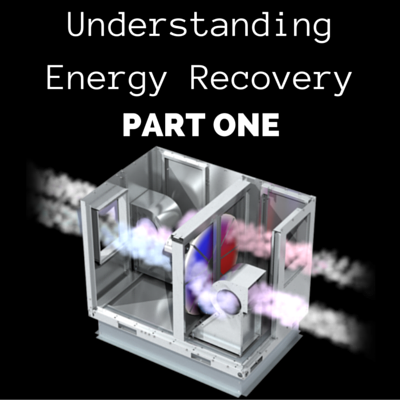Understanding Energy Recovery: Part One

What is Energy Recovery and Why Does it Matter?
With the increased focus on energy reduction and conservation, energy recovery is becoming a popular solution in commercial facilities ranging from churches and schools to restaurants and office buildings. As states and local jurisdictions continue to adopt and enforce the International Energy Conservation Code (IECC), building owners and facility managers will need to stay on top of standards and requirements. For the first segment in this two-part blog series, we’ll be breaking down the definition, top benefits, and trends of energy recovery.
What exactly is energy recovery?
Essentially, energy recovery ventilation equipment recovers energy from air that was already conditioned and would otherwise be exhausted from a building through an energy exchanger. The energy exchanger then transfers the heat/energy from the exhaust airstream to the supply airstream to pre-cool & dehumidify outdoor air in the summer and heat outdoor air in the winter.

Top Benefits
Scott Laurila, Product Manager at Greenheck, explains that this heat/energy transfer “lowers the mechanical cooling and heating load on a commercial building which results in two primary economic benefits.” The two benefits are as follows:
- Reduction in mechanical equipment size. Smaller air-conditioning units, chillers, furnaces, boilers, and electric heaters can now be used due to the reduced load requirements. This results in a reduction in the first cost of the equipment.
- Reduced energy consumption resulting from smaller compressors and heating components required to meet the building’s heating and cooling demands.
Energy Recovery Trends
In terms of trends within the industry, the primary driver to the use of energy recovery technologies is energy codes. The International Energy Conservation Code (IECC) incorporates verbiage from ASHRAE 90.1 (“Energy Standard for Commercial Buildings”). The IECC is updated every three years and with each update, the requirements for energy recovery increases. Both state and local jurisdictions adopt and enforce the IECC.
Be sure to check out part two of the series next week! Part two will discuss choosing the right equipment for your facility.
